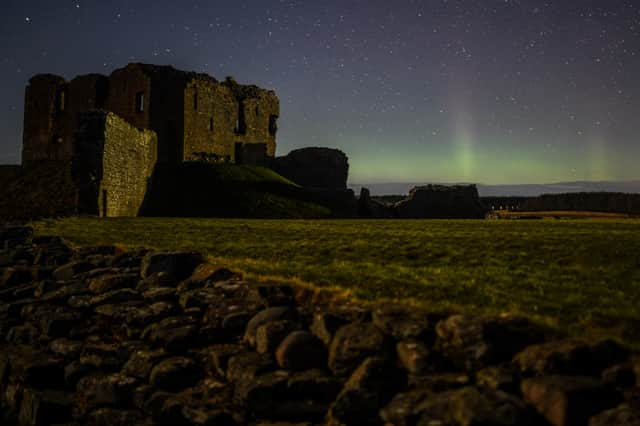Northern lights: UK aurora borealis forecast tonight, where can I see them today - Met Office weather forecast


Increasing solar activity caused by the sun’s 11-year cycle has resulted in displays of the aurora borealis - or 'northern lights' - as far south as Cornwall in recent weeks.
Coronal mass ejections, which occur when plasma clouds burst from the sun's outer atmosphere, are what cause the storms. The particles stream towards the planet, and as they hit the Earth's magnetic field, they produce the amazing show.
Advertisement
Hide AdAdvertisement
Hide AdNow, magnificent auroras are being predicted in both the northern and southern hemispheres tonight (25 March), as solar eruptions propel a stream of particles towards Earth.
Northern Britain may be able to see the northern lights, which are more frequently associated with northern Europe. Here is everything you need to know about it.
What are the Northern Lights?
The northern lights, also known as aurora borealis, are a natural light display caused by charged particles from the sun colliding with the Earth’s atmosphere.
When these charged particles collide with the gases in our atmosphere, such as oxygen and nitrogen, they release energy in the form of light.
Advertisement
Hide AdAdvertisement
Hide AdAuroras usually occur in a band called the annulus (a ring about 1,865 miles across) centred on the magnetic poles. Seeing the aurora borealis is usually something people travel to the most northern parts of the world to see, like Iceland and Norway.
But the arrival of a coronal mass ejection from the sun can cause the annulus to expand, bringing the aurora to lower latitudes. It is under these circumstances that the lights can be seen in the UK.
The more "violent" the solar storm, the further away from the poles the auroras will appear. Power networks and satellites that provide communication, surveillance and navigational services can be affected by severe storms.
What's the best way to see them in the UK?
Light pollution is an important consideration. Only the most powerful auroras can penetrate past urban illuminations, so it’s worth picking a location with guaranteed dark sky – either far from human settlements or in a protected area.
Advertisement
Hide AdAdvertisement
Hide AdMake sure you keep an eye out for unusual light patterns in the sky; sometimes it can look like a slight flicker of colour, other times you will have no doubt it’s the auroras. On average, lights turn up between 9pm and 2am with the best shows from 11pm to midnight.
It might seem obvious, but you’ll need to look north to see them. Though the lights may be spotted in more southern areas of the UK, they still emanate from the north, so turn in that direction. Ideally, you’ll want a low horizon unobscured by buildings or geographical features like hills.
The most spectacular pictures of the aurora borealis are usually captured with a long-exposure, which leads many people to expect the brilliantly green trails of light snaking eerily across the night sky. In actuality, the lights might look like a faint film of mist to the naked eye.
Using a long exposure to capture the aurora on camera necessitates the use of a tripod to keep your camera steady, but you can get some spectacular results when exposing for around 20-30 seconds.
Advertisement
Hide AdAdvertisement
Hide AdAuroraWatch UK, available from the App store, is a free service offering alerts when the aurora might be visible from the UK. Suitable for both casual viewers and serious hunters, My Aurora Forecast has both short-term as well as long-term forecasting options.
What's the weather forecast for tonight?
Striking lucky with solar flares is only one part of the puzzle. Even if activity is extremely high, the lights need clear skies to properly "perform".
At the time of writing, the Met Office's forecast for the evening of 25 March doesn't look too promising.
"Rain and hill snow will continue in eastern Scotland tonight," it says, while "outbreaks of patchy rain will also continue across the north and west of the UK, but drier and cloudy elsewhere."
Viewing the aurora, which could be relatively faint if it does appear at all, may also be hindered by a bright, near-full moon, which could drown out the lights in the night sky.
Comment Guidelines
National World encourages reader discussion on our stories. User feedback, insights and back-and-forth exchanges add a rich layer of context to reporting. Please review our Community Guidelines before commenting.
